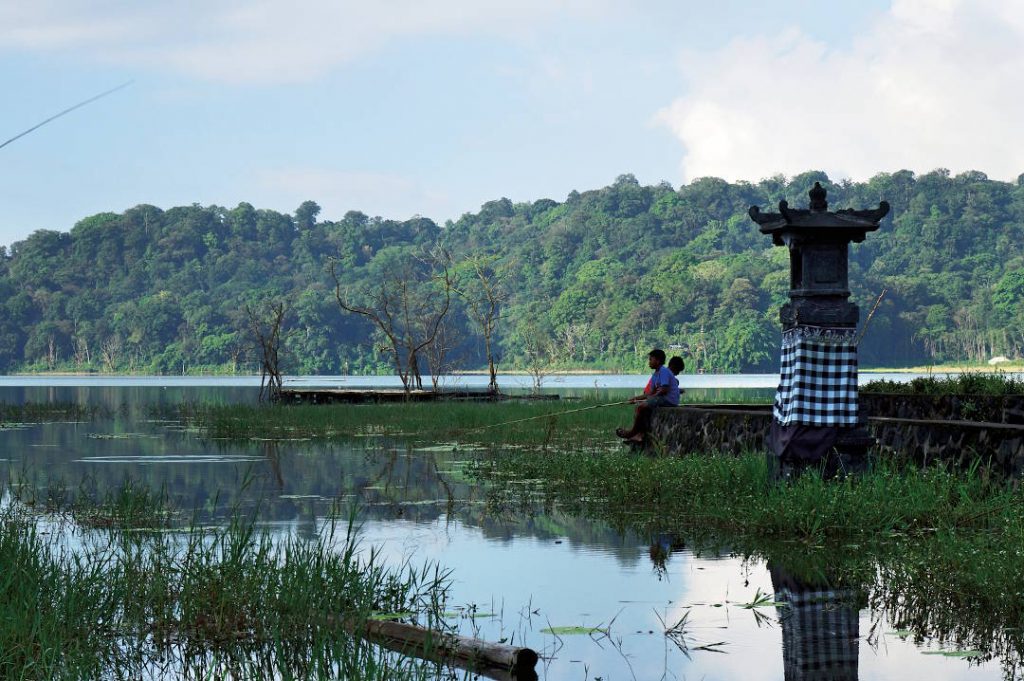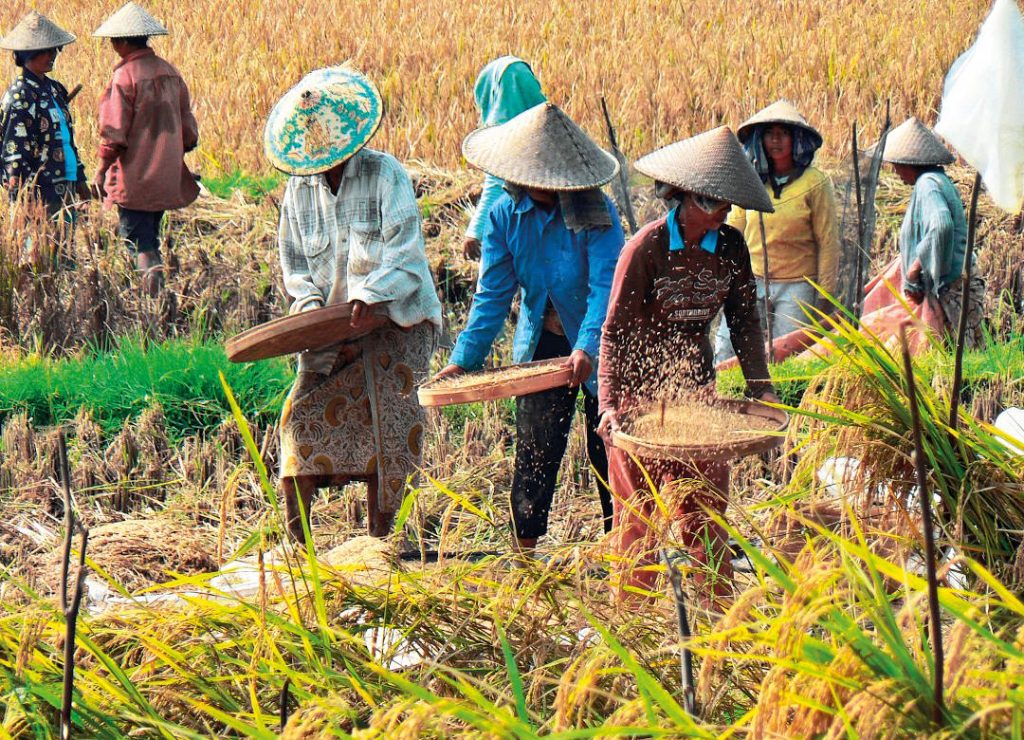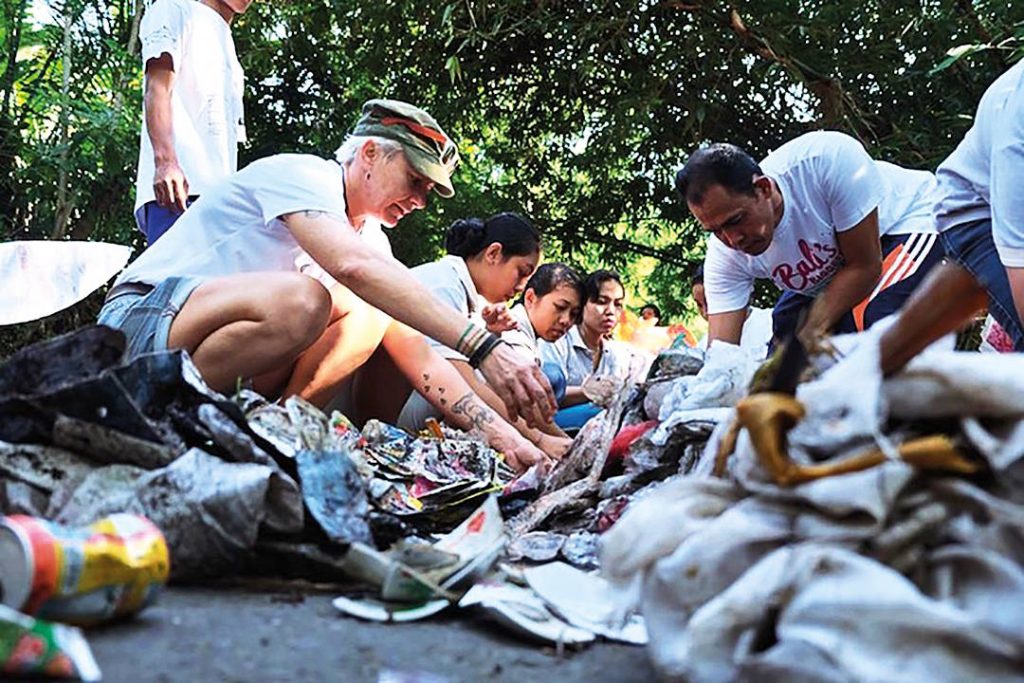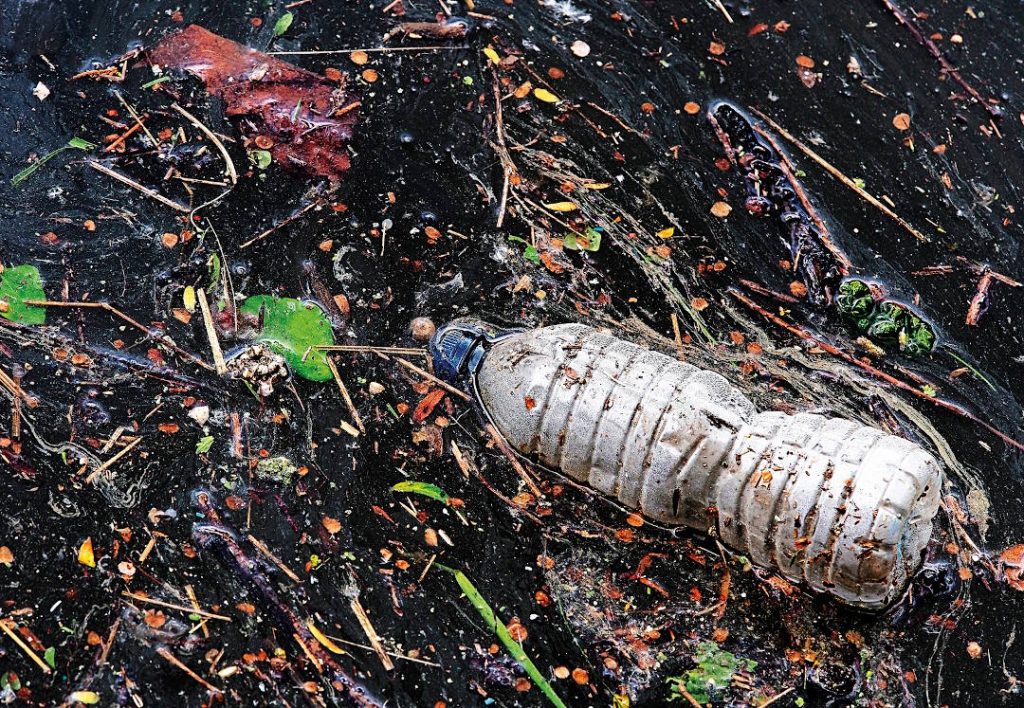This decade, we observed Bali’s biggest body of fresh water, Lake Buyan, lowering; witnessed worsening tides of trash sweeping our beaches; endured extreme heat during monsoon seasons; and watched as groundwater scarcity spread anxiety across the island. The past ten years have roused a series of environmental issues, underlining that the waste crisis and climate change are no longer problems of the future.
Running dry
Some Denpasar residents have fled their homes in pursuit of better water quality, whilst food and beverage retailers have become alarmed by the amount of dissolved minerals in their ‘clean’, filtered water.

An analysis by Indonesia’s Environmental Protection found that 260 of Bali’s 400 rivers have run dry, the water levels in Bali’s key reservoir, Lake Buyan, dropped by 3.5 metres in three years, and a falling water table has triggered saltwater intrusion along Bali’s south coast.
There are several factors that have made the crisis go from bad to worse, and it’s no surprise that the continuously growing tourism industry plays a big part.
In 2012, a senior lecturer from the University of the West of England who has studied water use across the world’s tourism regions, carried out research on the island. Stroma Cole highlighted in her findings that 100 tourists in 55 days consume the same amount of clean water that is enough to supply 100 rural families to last three years. She further concluded that water inequity in Bali has been causing social conflict and environmental problems; and foresaw the mismanagement of water to damage Bali’s tourism and economy in the future.
The irony lies in the fact that the Balinese actually have water management rooted in their very traditions. Since the ninth century, the Balinese have shared water through an irrigation system known as subak that is distributed from a sole source (the lake) as a means to water their crops.

For Ida Ayu Ratna, the head of Museum Subak in Tabanan, subak is the root of Balinese culture. The subak system is the manifestation of the Balinese Hindu philosophy ‘Tri Hita Karana’, which states that the harmony between people, nature, and God is what defines the true Balinese way of living. From an irrigation system, subak has evolved into an organisation not unlike a banjar that coordinates the distribution of water to the sawah (rice field) in strict accordance to the philosophy and hukum adat (customary laws). Each subak network has a temple within the vicinity, nurtures a healthy green environment, and a functioning community. The vast networks made the Balinese realise how much they relied on one of Bali’s four lakes: Danau Tamblingan, Danau Buyan, Danau Batur, or Danau Beratan.
“Legend has it, if there is a ceremony and the ceremonial instruments are submerged in a lake, they will appear in another place. This cemented the belief that each area has a specific lake as their source of water,” Ida Ayu Ratna says.
In Bali, traditions are passed down from generation to generation and are very rarely altered. In the subak system, the water goes through multiple processes before it even reaches the rice fields. Rituals, for example, are performed, including menjemput air (fetching ritual water) and prayers for the constant flowing of water.
“The rice served in Bali goes through around 20 to 28, rituals and ceremonies. It starts from a humble prayer of a farmer, then goes all the way up to the level of subak heads and members,” continues Ida Ayu, who hopes that the Balinese youth continue to respect the rice they eat and the fields it comes from.
Yet, as if symbolic of the looming crisis, the subak temple at Pura Bedugul in Denpasar no longer has a working irrigation network. The crops have withered up and dried, the rice fields now neglected.
Whilst belief and ritual may play an important part in preserving the subak system – and thus the better management of Bali’s water reserves – Chakra Widia thinks that the issues being faced are in fact more tangible than that. Chakra, a permaculture farmer who helped John Hardy build the famous Green School, is a sceptic, to say the least. He thinks that the problems and the solutions lie not in faith, but in science, logic and nature itself.
For example, Chakra shares a story on how a reservoir in Mengwi diverts water to a collection of villas and resorts in the south, leaving farmers with little to no water supply, however this is “not seen as an act of trickery or theft”.
Many farmers believe or are made to believe that the water is being diverted to needier communities. So, they accept their fate. However, to get their fair share they resort to stealing water from neighbouring fields, fundamentally defeating the purpose of Bali’s sacred subak system – and thus defying the very philosophy of Tri Hita Karana.
“People are fighting for natural resources, disrupting peace between communities in one way or another. Does this exhibit Tri Hita Karana?” Chakra asks rhetorically. “If we were to learn from our ancestors, we would look after our prosperous environment and wildlife and practise permaculture.”
But Bali’s water crisis isn’t only found above ground. It extends far below the surface of the rice fields. The groundwater levels are at a record low of less than 20%, continuing to drop to the point of no return. A tropical, agricultural island now suffers from a water shortage, and no one is really talking about it!
The damage has been done and is, quite frankly, irreversible. When people drill down to deepen their wells, often recklessly, they are lowering groundwater levels even deeper than sea level, paving way for ocean water to fill in the gap. To make matters worse, the very developments that are sucking up the water are also making it hard for the groundwater to replenish. Rainwater simply doesn’t reach the ground for natural absorption, blocked by the spreading layers of concrete.
Kadek Diana, from Universitas Udayana’s Faculty of Environmental Engineering, posits a rudimentary solution: to revisit our science textbooks and learn from the hydrological cycle or better known as the water cycle. It depicts the continuous movement of water on, above, and below the surface of the Earth.
“Earth’s water is always in movement. When everything was natural, water would fall and seep into the ground. Now we have cement, asphalt, stones as surfaces, so instead of letting absorption and evaporation of the cycle to occur, water stays atop and eventually runs to the ocean,” she says.
“Most people extract water from the ground not realising that they are disrupting the sensitive equilibrium. They don’t think twice on how to continue the cycle. We need a proper catchment system. We have to find ways to catch water and allow it to absorb into the ground, helping to prevent salt water intrusion,” she concludes.
Dr Ketut Gede Dharma Putra, Chairman of Udayana’s Centre of Sustainable Development, who has been working with Japan International Cooperation Agency (JICA) on Bali’s water waste management proposed a similar idea.
“With water flowing from lakes through rivers, there are still a lot of opportunities. In theory, water should be stored in reservoirs prior to distributing for irrigation, drinking, and so on. It should go through different stages, like a cycle, not straight into the ocean as it does now,” he says.
In reality, however, Bali has limited reservoirs. It’s not about lacking water; there are arguably many sources for this. The problem lies in management and infrastructure above all else.
This year, the Balinese government has finally taken the matter seriously, creating a roadmap for sustainable water management, including rebuilding dams. Yet, as always, we are playing ‘catch up’. We are already below the threshold for the demand for water and improving infrastructure to meet current demands does not take into the account Bali’s constant development. By the time today’s demands are met, tomorrow’s demands will be even greater. Curbing Bali’s rapid development in parallel to creating these infrastructure is paramount to solving the island’s water crisis.
Trash talk
Water is only one of Bali’s environmental concerns. One on-going issue has been waste, particularly plastic. It has become so much of an issue that it is actually affecting tourism; in November 2019, popular travel platform ‘Fodor’s Travel’ included Bali in their ‘Fodor’s No List 2020’, recommending that people rethink their next holiday to the island of the gods due to the waste crisis.

Why is there such a huge waste management problem though? Some say it is legacy of old habits – in the past, everything the Balinese used was natural, with rice dishes wrapped in banana leaves and organic food in offerings. When discarded, these simply decomposed and became part of the land again. Now these have been replaced with plastic, but the habits remain the same. Throw it away when you’re done.
With the world’s eyes on Bali, the government issued a ban on single-use plastics in December 2018 and private companies – from restaurants to hotels – have taken plastic use and waste management into their own hands. However, the problems still remain at local levels.
One programme looking to help at this level is Merah Putih Hijau (MPH), a waste separation and collection network run by the Ubud-based environmental company Mantra Bali. Mantra specialises in sustainable management, helping businesses audit energy, waste, and water with its ‘eco tool kit’ amongst other services.
MPH collaborates with Pererenan Village, local subak residents, and other partners in Canggu to improve village infrastructure and the island’s plastic and waste issue. The short-term goal is for local communities to be self-sustaining whilst they aim to create a working template for other villages to replicate in the long run. Waste separation a local level is imperative.
“Waste separation comes back to the action of garbage collectors. They try their best to sort and separate waste where possible. They do understand the importance of waste separation but they’re also cherry picking, looking for the most valuable things; cans, zinc, copper, whatever they can sell. It is happening already,” says Sean Nino, Co-Founder of Mantra Bali.
According to Nino, separation should be enforced by the government, which he suggested to take form in some five year campaign on television and the news imparting a clear method, the dangers of burning plastic and the benefits of separation.
Often, a lack of understanding of the effects of littering, dumping or burning has kept these practices commonplace. There needs to be a larger awareness of endocrine disruptors or carcinogenic compounds in plastic to shift people away from their casual approach to bakar sampah (burning rubbish), thus incentivising proper waste processing practices.
Same goes for farmers. When they spray pesticides and practise stubble burning after harvesting, we’re inhaling chemicals that damage our brain, he warns.
A new study gathered that plastic waste has poisoned Indonesia’s food chain to an alarming extent. It sampled chicken eggs around sites where plastic waste accumulates and identified shocking levels of dioxins and polychlorinated biphenyls long known to be highly detrimental to human health. The eggs collected near a factory that burns plastics for fuel were found to be similar to those of Vietnam’s notorious Agent Orange, considered one of the most dioxin-contaminated locations on Earth.
Combined with the gas emissions Bali’s congested roads accumulate every hour, the island would be in the running towards nursing air quality levels more akin to Jakarta, the capital city.
The community drive
The same decade that has brought many of these problems to the surface has also spurred a surge in community-driven action.
As if taking cue from the Indonesian tradition of ‘gotong royong’, or group cooperation, a wave of environment-based organisations, hundreds of community-run ‘beach clean ups’ (now an island-wide custom), the Food Rescue movement and more have helped to curb effects and spread awareness. If not for private and community initiatives, it would be safe to say the island would be in a sorry state – to put things mildly.
On an island where rice fields, waterfalls, valleys and beaches are the very reasons visitors come to the island, why is it then that these are not protected? If Bali wishes to sustain its place as one of the top tourist destinations in the world, then it must see the value in its environment and make concerted action to protect and preserve it. This involves everything from proper management of waste and resources, curbing overdevelopment and raising awareness with a single, unified, island-wide vision.We don’t want Bali to come to mind when Joni Mitchell’s ‘Big Yellow Taxi’ starts to play: “they paved paradise, and put up a parking lot.” Or is it too late already?







